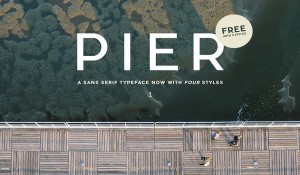Native advertising—or advertising that matches the appearance, content, and style of a publication’s organic media—can go horribly, horribly wrong.
And while there are many reasons for this, one of the most common is that the brand and publication don’t fit. When their audiences or focuses aren’t aligned, the resulting content can be confusing, awkward, or just be plain weird. For an example, read up on The Atlantic’s disastrous collaboration with The Church of Scientology.
Nonetheless, some platforms have managed to create some awesome campaigns with rather unexpected partners. Check out these six exceptions to the rule.
1. Refinery29 and Abercrombie & Fitch
Talk about strange bedfellows. Refinery29 is a darling of the media industry, while Abercrombie & Fitch has seen its stock go down… and down… and down.
To recapture some of its previous customers (and acquire new ones,) A&F paired up with R29 for “The Great Escape,” a campaign that included a $4,500 exotic getaway sweepstakes and destination-themed packing lists.
Not only did the prizes and cool lists attract women who might’ve been turned off by the Abercrombie brand, but the fun, smart copy also helps make the troubled clothing brand seem cool again.
For example:
Between rent, yoga classes, and some attempt at a social life (yes, you would like to split a bottle of wine with that), saving big bucks for an out-of-this-world vacation is more “yeah, right” than “you bet.”
2. Thrillist and American Greetings
Young, trendy, in-the-know “dudes” read Thrillist to discover the newest thing in food, drink, and clothing. They’re not exactly American Greetings’ core customer base.
To get millennial men to buy greeting cards (rather than just receive them from their grandmothers), Thrillist and American Greetings teamed up on “The World’s First Digital Taco Launches With a Real Taco Love-Fest.”
This short article highlights American Greetings’ latest venture, an Apple Watch app called justWink that lets people send cartoon tacos to their friends. The accompanying video showed the card company handing out free TexMex in Times Square to celebrate the launch.
The theme, faux-serious tone, and non-stop cultural references are highly effective in transforming American Greetings from a sappy cliché-generator to a cool, relevant company.
3. PureWow and Dick’s Sporting Goods
PureWow is a digital publication all about women. With verticals dedicated to beauty, style, fashion, home, health, food, and more, it’s managed to build a reader base of four million.
Meanwhile, Dick’s Sporting Goods has captured 10% of the national sporting goods industry. It’s widespread, but no one would call it “sexy” or female-oriented.
Peak Performance, the pair’s custom content series, highlighted all the trendy athletic gear Dick’s has for women while also providing workout tips, social media tie-in, and Spotify playlists. The campaign was sleek and sexy, generating lots of positive brand awareness for Dick’s s without damaging PureWow’s credibility.
4. New York Times and Holiday Inn
You read the New York Times for its high-quality writing, for the impressive legacy, for its reputation as being the authoritative news source. You stay at the Holiday Inn because you’re trying to save a little money on lodging but you’re not quite thrifty enough to opt for a motel. So a collaboration between the NYT and the “budget” hotel brand would seem destined to fail.
But it doesn’t. “Extraordinary Journeys” is a mini documentary about the Creekmores, who committed to traveling together for a full year. The family is relatable, the story is inspiring, and the entire piece motivates you to travel without ever seeming promotional.
5. Buzzfeed and Allstate Insurance
Thanks to its highly shareable listicles, GIF articles, and memes, Buzzfeed draws around 76 million visitors per month. And while Allstate also boasts a large reach (it’s the largest publicly owned personal insurer in the nation), the company’s image is far from “light and fun.”
The partnership between Buzzfeed and Allstate does a fantastic job of making Allstate hip. From “Definitive Proof That Puppies And Babies Make Adorable Siblings” to “Expectation Vs. Reality: Decorating Your First House”, every piece in this series is humorous, entertaining, and informative—a tricky combo to master even when you’re not promoting a brand.
6. Thrillist and Coach
Thrillist’s custom content team clearly deserves promotions, because Thrillist scores a second mention on this list for its collaboration with Coach, “A Top NYC Food Photographer’s Favorite Spots”.
As previously discussed, Thrillist’s target audience is young men. Coach’s demographic, on the other hand, is made up of girls ages 12-16 and older women ages 45-80. Not only is Thrillist for guys, while Coach is traditionally viewed as a female brand, but even the ages don’t overlap!
But this campaign is actually very strategic. In 2010, Coach launched a male clothing and accessories line. Unfortunately for the company, most men are either unaware of its existence or don’t consider it to be masculine enough.
So the Thrillist + Coach custom article attempts to make Coach seem modern and hip by spotlighting hidden New York City culinary gems. Plus, there’s the Instagram angle—everyone knows millennials love Instagram.
Native partnerships between unexpected partners are super risky. But when done right, they can completely reinvigorate or reshape a brand’s image.
Aja Frost is a writer, tech/design geek, and podcast addict. Check out her site or say hi on Twitter.





